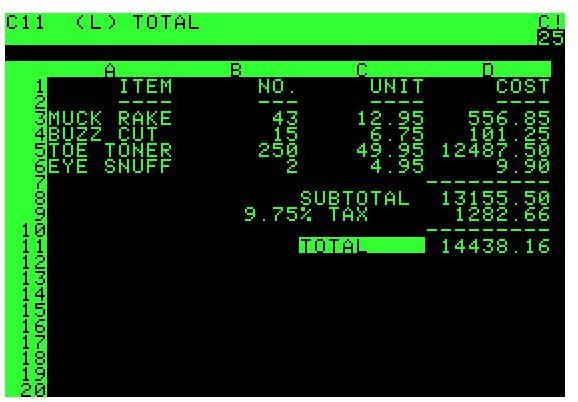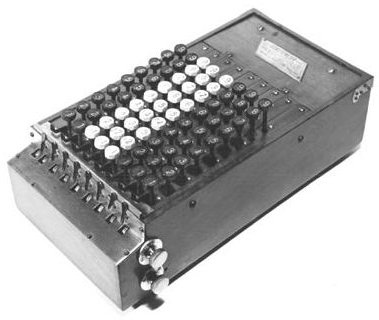This Day in Computer History: October 11
This Day in Computer History
1887
The patent for the first successful key-driven calculator, dubbed the “Comptometer,” is granted to Dorr E. Felt of Chicago, Illinois. (Patent No. 371,496) The device is capable of addition, multiplication, and subtraction and is a housed in a metal “macaroni box.” It will be the first calculation device to become commercially successful.
1957
An IBM 704 computer at The M.I.T. Computation Center in Cambridge, Massachusetts successfully calculated the orbit of the last stage of the rocket that will carry Sputnik I.
1962
IBM released the IBM 1440 data processing system. It represents a major breakthrough in data storage technology. The IBM 1311 disk storage drive is capable of storing up to two million characters on a IBM 1316 disk pack. IBM describes the system as “one of the most important new products we have ever announced.” The 1311 was physically the size of a modern washing machine, while each of its removable disk packs were four inches thick, fourteen inches in diameter, and composed of six disks with ten recording surfaces. Each pack weighed ten pounds.
1968
The NATO Software Engineering Conference, held October 7 - 11, is concluded. It’s the event that first popularized the term “software engineer,” which was first coined by the Munich University of Technology’s Professor Fritz Baur and used to describe a process under which computer programming had failed to keep up with the suddenly onslaught of burgeoning computer hardware.
1979

Dan Bricklin released the landmark application Visicalc, the “killer app” that would transform the personal computer into an essential business tool. It’s the world’s first spreadsheet application, but Bricklin never patented it or any of its features. Soon after Visicalc’s release, a crop of increasingly sophisticated software would spring up, usurping its short-lived position the world’s most popular lunch application.
1988
A one hundred-digit number is factored by computers for the first time in history. The number was factored by a network of four hundred computers connected via the internet across Australia, North America, and the United States in just under a month. The event is marked as a landmark achievement both because it proved the feasibility of distributing massive computing tasks over mutliple systems and because it proved the need for continuing advancement in the field of cryptography. The factors of large numbers are central to cryptography, with larger numbers providing increasingly better encryption systems.
1994
IBM announced that the next version of its OS/2 operating system would be called “OS/2 Warp”.
2000
Microsoft released version 9.0 of its office suit, Office 2001, for Macs, featuring Excel 5, PowerPoint 4, and Word 2001.
This post is part of the series: A Chronology of Computer History for the Month of October: This Day in Computer History
This series provides a daily account of what happened on this day in the history of computing and technology. It discusses developments, breaking news, new releases and global implications that occurred as a result of these ground breaking events.
- This Day in Computer History: October 4
- This Day in Computer History: October 5
- This Day in Computer History: October 6
- This Day in Computer History: October 7
- This Day in Computer History: October 8
- This Day in Computer History: October 9
- This Day in Computer History: October 10
- This Day in Computer History: October 11
- This Day in Computer History: October 12
- This Day in Computer History: October 13
- This Day in Computer History: October 14
- This Day in Computer History: October 15
- This Day in Computer History: October 16
- This Day in Computer History: October 17
- This Day in Computer History: October 18
- This Day in Computer History: October 19
- This Day in Computer History: October 20
- This Day in Computer History: October 21
- This Day in Computer History: October 22
- This Day in Computer History: October 23
- This Day in Computer History: October 24
- This Day in Computer History: October 25
- This Day in Computer History: October 26
- This Day in Computer History: October 27
- This Day in Computer History: October 28
- This Day in Computer History: October 29
- This Day in Computer History: October 30
- This Day in Computer History: October 31
